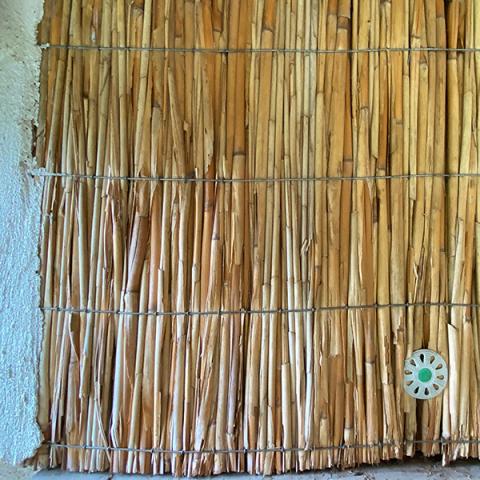Architetto, compie studi e ricerche sulla teoria e sulla pratica nel campo della Architettura bioecologica ed il consumo zero in architettura, fa parte di A>e ed ANAB
La verifica dei materiali naturali idonei al restauro deve essere identificata per fasce climatiche, misura tecnicamente indispensabile, analizzando ogni manufatto non solo in termini di identità e tecniche tradizionali idonee, ma anche per l’evoluzione dei sistemi tecnologici presenti, che vanno ricercati e messi in evidenza. L’articolo propone un percorso analitico su una tipologia ricorrente con lo scopo di essere esemplificativo per qualsiasi manufatto esistente al fine di comprendere correttamente il ruolo dell’involucro, fondamentale per raggiungere gli obiettivi di un ambiente sano e di benessere.
This could be the historical period where the construction technique can begin to refine the use of natural origin and / or agricultural waste materials, that today we describe as true sustainable. With the production costs’ reduction in relation to their LCA and environmental impact, without neglecting the spatial linearity and the surface identity, maintaining a traditional craftsmanship and innovation and local economic support.
Recovery of the ancient building tradition?
In order, the materials used by nature, i.e. conceived, invented and produced on site using the energy elements present are: air, raw earth, terra cotta, aerial lime, gypsum, lime or hydraulic lime, local stones, reed or other fibres also animals and solar energy.
These materials are characterized by a high degree of hygroscopicity and developed for the most suitable construction techniques and morphology for the microclimate in and with which they must measure themselves; putting into practice the fundamental rule of the natural system: the rule of the property of energy saving in the production of raw materials then constitute the building materials, of the minimum material’s consumption for the minimum surface.
Therefore, architecture and natural technique support us in the use of construction systems that work not only for energy saving, but also for internal salubrity.
From these considerations, the restoration or renovation of ancient buildings, including also the lesser ones, has started a new attention to sustainability in the design choices on the use of the most suitable materials with a careful eye on the volume (mass) surface, orientation ratio. It is therefore essential to ask ourselves, while choosing materials, how much energy is needed for their production and supply.
Component can be given by the opportunity to verify the presence of the ANAB-ICEA certification.

Il percorso progettuale non può prescindere dal rapporto stretto con l’utilizzo delle risorse disponibili; economicamente si deve agire restaurando, recuperando sul necessario, identificando oculatamente le scelte degli interventi necessari, verificando le priorità e analizzando caso per caso tutti gli elementi costitutivi il manufatto. La verifica di compatibilità dei materiali, base per l’idea tecnico progettuale, va di pari passo con l’individuazione cosciente dell’uso appropriato dei componenti basandosi nella verifica della loro LCA di sostenibilità energetica.
Questo approccio progettuale consente di stratificare la memoria delle tecniche costruttive e della loro innovazione risaltando le peculiarità luogo.
Un approccio di restauro il meno inclusivo possibile: reversibile.
Design cannot be separated from the close relationship it has with the use of available resources; economically one must act by restoring and recovering necessary measures and by carefully identifying the choices to be made on remedial intervention.
A case by case verification and evaluating of all priorities and elements making up the artifact.
The verification of compatibility of materials, which are the foundation for technical design, go hand in hand with the identification of the appropriate use of components based on the scrutiny of their LCA energy sustainability.
This design approach allows one to build up a memory of building techniques and their innovation thus boosting peculiarities of location.
One wants to identify and set up an approach by using minor inclusive renovation but which at the same time can be specifically defined with the following adjective: reversible.
Nella conservazione dei manufatti antichi una grande rilevanza va identificata nella verifica dei sistemi impiantistici tecnologicamente compatibili con le tecniche costruttive originali degli edifici storici, che erano basati sul sistema “edificio impianto”. Per energia del sistema edificio impianto si intende la verifica, il rilievo e la comprensione del sistema delle soluzioni tecniche proprie dell’edificio che lo rendevano adatto alle richieste di benessere dell’uomo in un dato periodo storico e che ora viene svolta (sostituita) da un impianto meccanico termico.
Il restauro di questo edificio mette in campo un’idea semplice: l’uso delle tecniche “caso per caso” e quelle del recupero energetico in retrofit anche in edifici vincolati, usando tecniche a secco ed a strati materici, reinserendo come materiali la fibra e l’aria e la massa per mantenere inalterate le caratteristiche energetiche di comfort estivo insite nel manufatto, peculiari degli edifici storici, i sistemi a cappotto interno ed esterno l’intradosso murario, l’impianto meccanico ad aria controllata col supporto delle energie rinnovabili, per risolvere il regime invernale. La sfida più alta: renderlo energeticamente a consumo quasi zero.
The restoration can alter the characteristics of the original energy of the building, or may not be compatible with the materials and construction techniques energy of our historical heritage.
The culture of the restoration project, in fact, protected the historical artifact using all the techniques to recover the identity of spatial and material.
The occasion of the restoration of this portion of the building has in place a simple idea, the search for a contemporary technique using ancient materials: the use of the fiber and the air, materials of antiquity, for the scientific restoration of its energy system.
Study, understanding, selection of materials used in the construction process and construction techniques that use materials that present minimal consumption of energy in their production cycle. In fact, the energy requirements resulting from heating or cooling of the building can be induced by exploiting the conservation and passive use of solar energy, ventilation and natural ventilation of the premises (building as a system) and the thermal comfort made from the mass in air conditioning in summer.